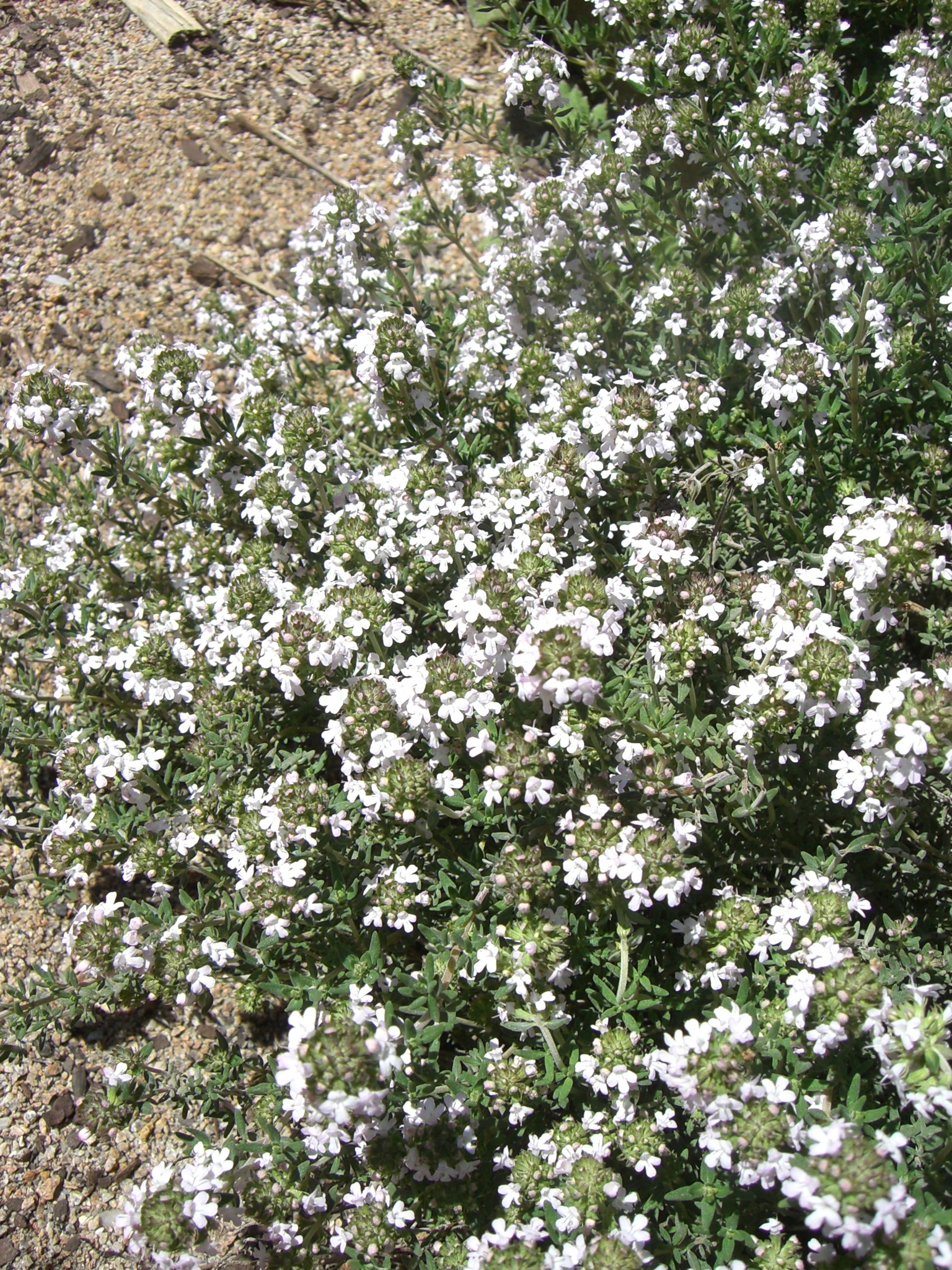
Erect or decumbent wiry shrub to 20 cm, rarely rooting at the nodes. Stems more or less 4-angled, hairy all round. Leaves ovate to narrow-lanceolate, 5-12 mm long, 2-4 mm wide, obviously or slightly rolled over (look for young leaves and partly dried leaves). Midrib and lower surface of leaf usually covered with short hairs. Marginal cilia absent. Veins inconspicuous. Inflorescence terminal and mostly axillary, bracts shorter and relatively wider than the leaves. Calyx 4-5 mm long, upper lip divided to one third or half, height and width of teeth equal, not ciliate. Lower lip with 2 narrow ciliate teeth. Corolla about 6 mm long, usually pale pink to white. Upper lip notched, lower lip with middle lobe contracted at the base. Flowering period long, starting in mid-spring.
SW Europe
Bushy habit, 'rolled-over' leaves without cilia, early flowering, with small whitish flowers in elongated inflorescences, strong fragrance. Narrow- and broad-leaved variants are in cultivation in Australia. Broad-leaved plants with almost flat leaves are common and possibly of hybrid origin. The species has 6 known chemotypes, most not available in Australia.
Similar species are T. zygis L. with narrower grey leaves, and T. baeticus Lacaita with broader, ciliate leaves, both from Spain. T. carnosus Boiss. forms a dense tuft of erect stems to 40 cm,with fleshy leaves that are glabrous above, and bracts that are broader than the leaves.
Source: (2002). Thymus. In: . Horticultural Flora of South-eastern Australia. Volume 4. Flowering plants. Dicotyledons. Part 3. The identification of garden and cultivated plants. University of New South Wales Press.

Thymus vulgaris 'Fragrantissimus'
A narrow-leaved cultivar with a sweetish aroma.
The original T. 'Fragrantissimus' arose in France and had the fragrance of Rose Pelargonium. However, it is unclear if the local plants are the same.
Leaves hardly rolled over. See variegated thymes below for this cultivar, the inflorescence of which indicates its hybrid origin. ['Posie']
Thymus vulgaris 'Westmoreland'
Distinctively tufted plant with erect woody stems; internodes short with tufts of leaves in the axils. Stems eventually fall to the periphery after flowering, leaving a hole in the middle. Leaves not ciliate, the under surface only sparsely hairy but covered with prominent yellowish glands which are also prominent on the calyx. Flowers, female, arranged in more obvious heads than other local variants of this early flowering species.
This cultivar seems to be restricted to Australia and New Zealand and is probably of hybrid origin since it roots more readily at the nodes than typical T. vulgaris.